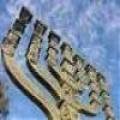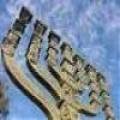Home › Forums › Krav Maga Worldwide Forums › KM Techniques & Krav Maga Books › Fist Hardening.
- This topic has 21 replies, 15 voices, and was last updated 11 years, 4 months ago by
 jewishfitness1976.
jewishfitness1976.
-
AuthorPosts
-
June 28, 2012 at 6:05 am #85293
 kevinmackMemberDecember 28, 2012 at 7:25 am #86503
kevinmackMemberDecember 28, 2012 at 7:25 am #86503ari-free
MemberRe: Fist Hardening.
This is an interesting question. No, you don’t want to condition your hand by hitting it against something hard or smacking something against it.
John Grissom is a bare knuckle boxer and he came up with this method of a twisting knuckle pushup on a wet towel and hitting a maize bag.
https://www.youtube.com/watch?v=RAeo9F2y3gc
But I would first work on the hand gripper (ironmind is very popular). That’s the safest route to a stronger hand with the benefits that go beyond fighting.
December 28, 2012 at 4:43 pm #86507 jewishfitness1976Member
jewishfitness1976MemberRe: Fist Hardening.
The N.Y. Times features an article called ” Character Study “.
You might find this interesting. Please keep in mind in ancient Japanese times where feuds going centuries back would harden their hands & feet in preparation to do battle. This type of thing is not necessary.
Be sure to watch the multimedia video clip …
http://www.nytimes.com/2012/06/17/nyregion/johnny-devincenzo-77-steel-pole-puncher.html?_r=0
December 29, 2012 at 12:07 am #86514 jewishfitness1976Member
jewishfitness1976MemberRe: Fist Hardening.
This one is by a Japanese karate master Soke Takayuki Kubota 10th dan Gosoku-ryu karate performs tameshiwari and conditioning exercises.
You may want to turn the volume up as he goes through his karate punching routine.
Imagine how dangerous he was in the prime of his life. I do not know if he was in the Japanese army during WW 2 but that is one seriously dangerous dude even in his old age.
http://www.youtube.com/watch?v=hH8xH_CrwvY
Pre-WWII Goju Ryu Training
December 29, 2012 at 12:55 am #86515 jewishfitness1976Member
jewishfitness1976MemberRe: Fist Hardening.
On a different subject of fist hardening. Boxers usually do not harden their fists even in the old days when bare fisting contests were held in the 1800-1900’s.
This one is a Jewish boxer.
The Auschwitz Boxer – A Surviving Holocaust Story
A Holocaust survivor recalls “Prisoner 77,” who boxed his way into survival at the notorious Auschwitz death camp.By Tzvi Ben Gedalyahu
First Publish: 12/26/2012, 7:36 AMThe memory of Prisoner Number 77 still brings hope to the heart of Auschwitz survivor Tadeusz Sobolewicz as he remembers how his friend boxed for bread in the notorious Nazi German camp.
The story of fellow inmate and boxer Tadeusz Pietrzykowski has been all but forgotten nearly seven decades after the end of World War II, AFP reported.
The very idea of sport at Auschwitz seems preposterous.
The camp was set up by the Nazis in southern Poland after their 1939 invasion to hold and kill Polish political prisoners, and was to become a hub of the Holocaust, during which the Nazis murdered six million Jews.
Polish author Marta Bogacka, in a new book “The Auschwitz Boxer”, has brought the story of Pietrzykowski, little known outside Poland, back into the spotlight.
To Sobolewicz, 89, it still seems like yesterday.
“The first bout took place on a Sunday in March 1941 next to the Auschwitz kitchens, between Tadeusz Pietrzykowski and the German ‘kapo’ Walter Dunning,” he told AFP, using the term for the common criminals deployed by the Nazis as overseers.
A rumor went around that Dunning, a former middleweight professional who had fallen foul of the law, was looking for an opponent in exchange for a loaf of bread and some margarine.
Pietrzykowski, a pre-war bantam weight at the boxing club Legia Warsaw, rose to the challenge. “Teddy, as the Polish media nicknamed him before the war, must have weighed about 45 kilos (99 pounds), and Walter around 70 (154 pounds),” Sobolewicz said.
In peacetime, the maximum fighting weight in Pietrzykowski’s category was 54 kilos, and 75 kilos in Dunning’s.
In June 1940 Pietrzykowski had been on the first train convoy of 700 Polish political prisoners deported to Auschwitz — a former army barracks in the city of Oswiecim. “So he was already very thin after eight months of backbreaking work and malnutrition,” Sobolewicz said.
“He was the smaller of the two, but he was agile and fast. He had an incredible punch, aimed right for the stomach, and knew how to duck his opponent’s blows. He won the fight and got his bread and margarine. You have to admit that the Germans kept their promise.”
More fights were to follow.
Pietrzykowski threw himself into them, knowing full well that he risked death by starvation.
For his fellow inmates, every blow he struck was a source of pride and hope. “We were elated. We said to ourselves, ‘As long as there’s a Pole punching a German in the face, Poland’s not finished’,” Sobolewicz said.
After Germany’s defeat by the Soviets at the Battle of Stalingrad in early 1943, the camp guards from the Nazis’ notorious SS sought ways to forget that the tide of the war was turning, Sobolewicz said. They watched the matches — pitting prisoners between themselves as well as against the kapos – and placed bets.
After the first scratch bouts, the camp authorities let the boxers build a proper ring and allowed them to make gloves, according to Bogacka’s research.
Pietrzykowski notched up some 40 fights, and around 20 more after he was transferred to the Neuengamme camp in northern Germany in 1943. He survived the war, passing away in 1991 in Bielsko-Biala in southern Poland.
His most celebrated Auschwitz match was against Schally Hottenach, a 96-kilo German. He won with a second-round knockout. That bout inspired the 1963 film “The Boxer and Death” by Slovak director Peter Solan.
Auschwitz’s twin death camp of Birkenau was purpose-built nearby in 1942.
Jews from across Europe — often told by the Nazis that they were being resettled” in the East — were sent there directly by train to be murdered in its gas chambers. The new arrivals had a meager chance of surviving thanks to the “selection”, where the SS picked out individuals deemed suitable for forced labor because of their peacetime professions.
Boxers were on the list.
Jewish middleweight Salamo Barouch, from Greece, was one who survived as a result, though he is not known to have faced Pietrzykowski in the ring.
The camp also saw football matches.
“The kapos wanted to amuse themselves. They played football amongst themselves, but taking on players of a different nationality brought an extra edge,” said Kazimierz Albin, who escaped in February 1943 and joined the Polish resistance. “And for us, being on the team meant getting extra food rations and being given lighter forced labor, so it was a chance to survive,” recalled Albin, 90.
Adam Cyra, a historian at the Auschwitz-Birkenau Memorial and Museum, said a football pitch was set up to the right of the Birkenau train ramp. “For people who were about to die, the vision of prisoners playing football against the kapos was meant to be reassuring,” he said.
A million Jews perished at Auschwitz-Birkenau, along with tens of thousands of others including Poles, Roma and Soviet prisoners of war, between 1940 and its liberation by the Red Army in January 1945.
http://www.israelnationalnews.com/News/News.aspx/163582#.UN4-QHy9KSN
December 29, 2012 at 11:36 pm #86529ari-free
MemberRe: Fist Hardening.
quote JewishFitness1976:This one is by a Japanese karate master Soke Takayuki Kubota 10th dan Gosoku-ryu karate performs tameshiwari and conditioning exercises.You may want to turn the volume up as he goes through his karate punching routine.
Imagine how dangerous he was in the prime of his life. I do not know if he was in the Japanese army during WW 2 but that is one seriously dangerous dude even in his old age.
http://www.youtube.com/watch?v=hH8xH_CrwvY
Pre-WWII Goju Ryu Training
What he’s doing is breaking down his own bones and letting them heal to become stronger. It does ‘work’ (Wolff’s law) but there are so many tiny bones in your hand that can be messed up and it will be harder to do things such as shoot a gun or play the piano.
I do not know why the Japanese practiced by punching air and wood all day instead of bags and mitts like the Thais.
Work on your grip strength for a tighter fist. You’ll be surprised to see so many body builders with weak grip since they machines and don’t pay attention to their hand strength. And everyone will ask you to open their jars of pickles!
January 1, 2013 at 4:31 am #86559 jewishfitness1976Member
jewishfitness1976MemberRe: Fist Hardening.
I do not know why the Japanese do that either.
Some of you may be interested in the history of boxing which is actually much older.
http://www.amazon.com/Boxing-Jewish-Sport-Excelsior-Editions/dp/1438436084
Boxing has been going on since biblical times. It was not called boxing in the days of ancient Israelites being warriors to protect the Abraham David & Solomon kingdoms.
-
AuthorPosts
- You must be logged in to reply to this topic.



